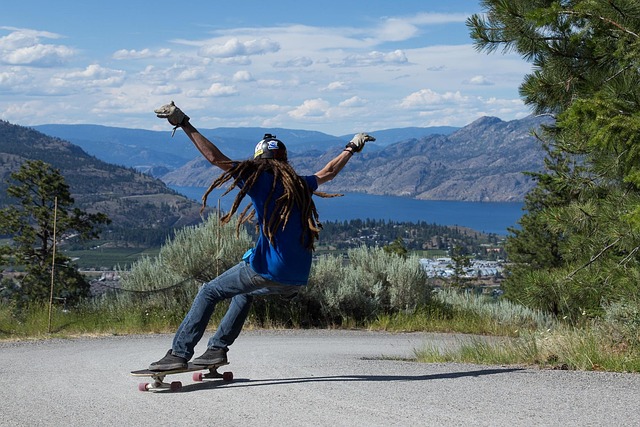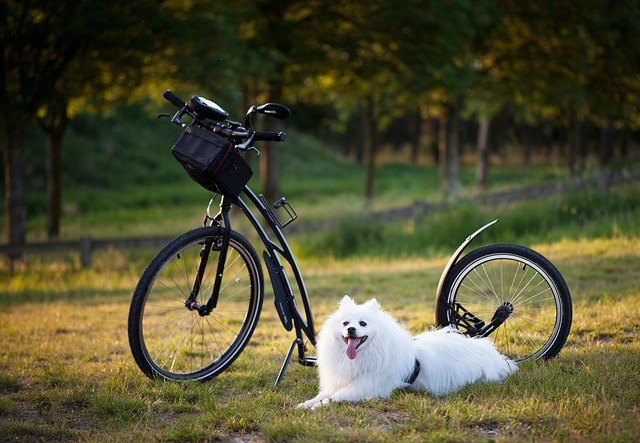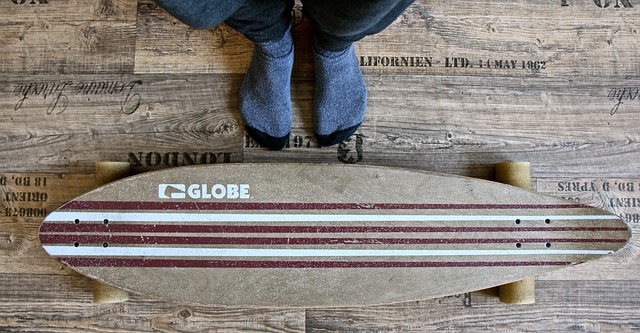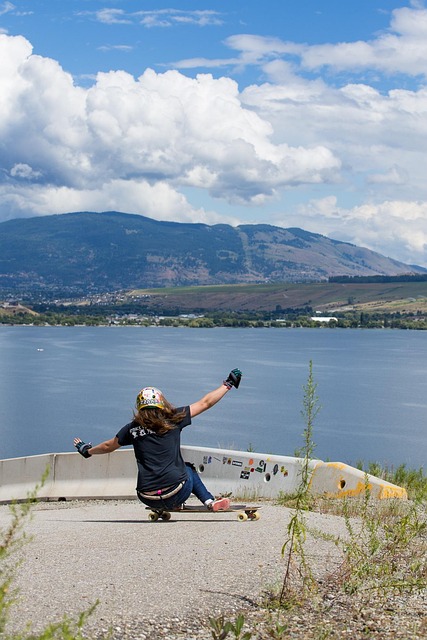Longboarding offers an accessible, exciting activity for newcomers, combining fun, fitness, and freedom. Beginners should focus on learning key skills using a stable longboard with suitable features. Mastering balancing, pushing, turning, braking, and safety gear prioritization ensures a confidence-building experience. Setting goals, practicing consistently, and engaging community resources support progress in this thrilling sport.
Dive into the world of longboarding with our comprehensive guide, tailored for beginners. From understanding the basics to mastering advanced techniques, this article is your one-stop resource. Learn how to choose the perfect board, from factors like wheel size and shape to deck design. Discover essential skills like standing, balancing, pushing, turning, and braking safely. We’ll also explore tips for consistent progress, safety gear, and the benefits of joining longboarding communities for support and inspiration.
Understanding Longboarding: A Beginner's Perspective

Longboarding is an exciting and accessible activity for those new to boarding sports, offering a unique blend of fun, fitness, and freedom. For beginners, it’s all about grasping the basics—the art of carving turns, gliding smoothly, and maintaining balance. The longboard for beginners is typically designed with stability in mind, featuring longer decks, softer wheels, and flexible trucks that make it easier to learn and control.
This gentle introduction allows folks to build confidence as they master fundamental skills like pushing, breaking (or stopping), and turning. With a longboard, you can cruise through neighborhoods, explore local parks, or even tackle gentle slopes, all while enjoying the smooth, flowing sensations it provides. It’s a great way to stay active, connect with nature, and discover a new passion that could last a lifetime.
Choosing the Right Board: Factors to Consider

When selecting a longboard suitable for beginners, several key factors come into play. First and foremost, consider your primary use case – whether it’s cruising around town, commuting to school or work, or simply enjoying leisure rides. For everyday commuting, opt for a board with a comfortable deck shape and moderate rockers, enhancing stability and maneuverability on various terrains.
Additionally, the wheel size matters. Larger wheels (around 70mm) offer smoother rides over cracks and rough surfaces, making them ideal for beginners navigating urban environments. Bearings and trucks should also be durable and user-friendly, ensuring smooth turning and easy maintenance. Remember to choose a board that feels intuitive and responds well to your input, fostering confidence as you learn to longboard.
Mastering the Basics: Standing and Balance Techniques

For those new to longboarding, mastering the basics is an essential step in building confidence and enjoying the ride. One fundamental skill to focus on is balancing and standing up on the board.
Start by practicing on a flat, smooth surface, using protective gear for safety. Begin with small shifts of weight, feeling how the board responds to your movements. Gradually build up to longer glides, keeping your eyes forward and focusing on maintaining your balance. Consistent practice will help you develop muscle memory and coordination, making it easier to stand and navigate your longboard smoothly.
Learning to Push: Propelling Yourself Forward

For newcomers to the world of longboarding, mastering the art of pushing is a significant milestone. It’s one of the fundamental skills that will unlock an enjoyable and efficient way to navigate your board. When learning to push, beginners should focus on developing a strong, fluid stride. This involves engaging your entire body, especially your core, to generate the necessary force for propulsion.
Practice on flat, smooth surfaces to build confidence and refine your technique. Start with small, controlled pushes, then gradually increase speed as you become more comfortable. The longboard’s flexibility allows it to cater to beginners’ learning curves, making it easier to manoeuvre and gain stability. Remember, consistent practice is key to improving your pushing skills on a longboard.
Turning and Carving: Navigating Curves with Ease

Turning and carving are essential skills for any longboarder, especially beginners looking to navigate curves with ease. With a longboard for beginners, mastering these techniques will make your rides smoother and more controlled. Start by practicing on a flat surface, focusing on balancing and maintaining speed while turning gently. Gradually increase the sharpness of your turns as you gain confidence.
Carving involves flowing along a curve in a smooth, fluid motion. To achieve this, use your body weight to lean into the turn, allowing the board to carve naturally. Remember, it’s all about finding the right balance between leaning and adjusting your speed for optimal carving experience on your longboard for beginners.
Braking Methods: Stopping Safely and Efficiently

For longboarders, mastering braking techniques is a crucial step in becoming more confident and safe on their boards. As a beginner, understanding how to stop smoothly and efficiently will significantly improve your control and overall experience. The key to effective braking lies in practicing different methods, allowing you to adapt to various situations. One popular approach is the ‘T-Stop’, where you slide the board by tilting it towards the direction of travel. This technique is great for controlled stops and is particularly useful on steeper descents.
Another method worth learning is the ‘Pancake’ stop, which involves laying your body flat and allowing gravity to slow you down. This style requires a bit more skill but can be very effective in emergency situations. By familiarizing yourself with these breaking methods, you’ll gain a better understanding of how to navigate different terrains and control speeds, making your longboarding experience on any longboard for beginners much more enjoyable and safe.
Practicing Safe Riding: Essential Safety Gear for Beginners

When taking up longboarding, prioritizing safety should be at the top of your list. Before hitting the streets, ensure you’re kitted out with the right gear to protect yourself during rides and falls. Essential safety items include a high-quality helmet designed specifically for longboarding, offering robust protection against head injuries. Protective gear such as elbow and knee pads are also crucial, providing padding in case of a tumble, especially when learning to ride. Many beginners opt for wrist guards too, which offer stability and protect the wrists from potential impact during a fall.
Invest in durable, well-fitting clothing that allows ease of movement without constricting your body. Longboarding gloves can enhance grip while also providing padding on the palms. Always consider the environment and conditions when choosing gear; reflective clothing is ideal for low-light visibility, while waterproof layers ensure you stay dry during rainy sessions. Remember, practicing safe riding involves being prepared with the right equipment from day one.
Tips for Consistent Progress: Overcoming Common Challenges

Starting your journey with a longboard can be both exciting and daunting. One of the keys to consistent progress as a beginner is setting realistic goals and creating a structured learning plan. Begin by mastering the basics—gaining control over stopping, turning, and carving smoothly. Regular practice sessions are essential; even short, daily routines can make a significant difference over time. Incorporate drills that focus on improving your balance, as this foundational skill will enhance every aspect of your longboarding experience.
Common challenges like maintaining speed or navigating turns efficiently are normal for beginners. Don’t get discouraged; instead, break these down into manageable steps and practice them in controlled environments. Consider learning from online resources or joining a local longboarding community for tips and support. Remember that progress takes time, and every small improvement is a step closer to mastering this exciting new skill.
Exploring Longboarding Communities: Finding Support and Resources

Exploring longboard communities is a fantastic way for beginners to gain support and access valuable resources. Many cities and towns have local groups dedicated to longboarding, whether it’s through social media platforms or community centers. These groups often organize events like group rides, workshops, and friendly competitions, providing an excellent opportunity to meet fellow enthusiasts and learn from experienced riders.
Online forums and websites also play a crucial role in connecting beginners with the longboard community. Platforms dedicated to longboarding offer spaces for asking questions, sharing tips, and discussing the latest trends. Engaging with these communities can help newcomers navigate the ins and outs of longboarding, from choosing the right gear to understanding different riding styles.
